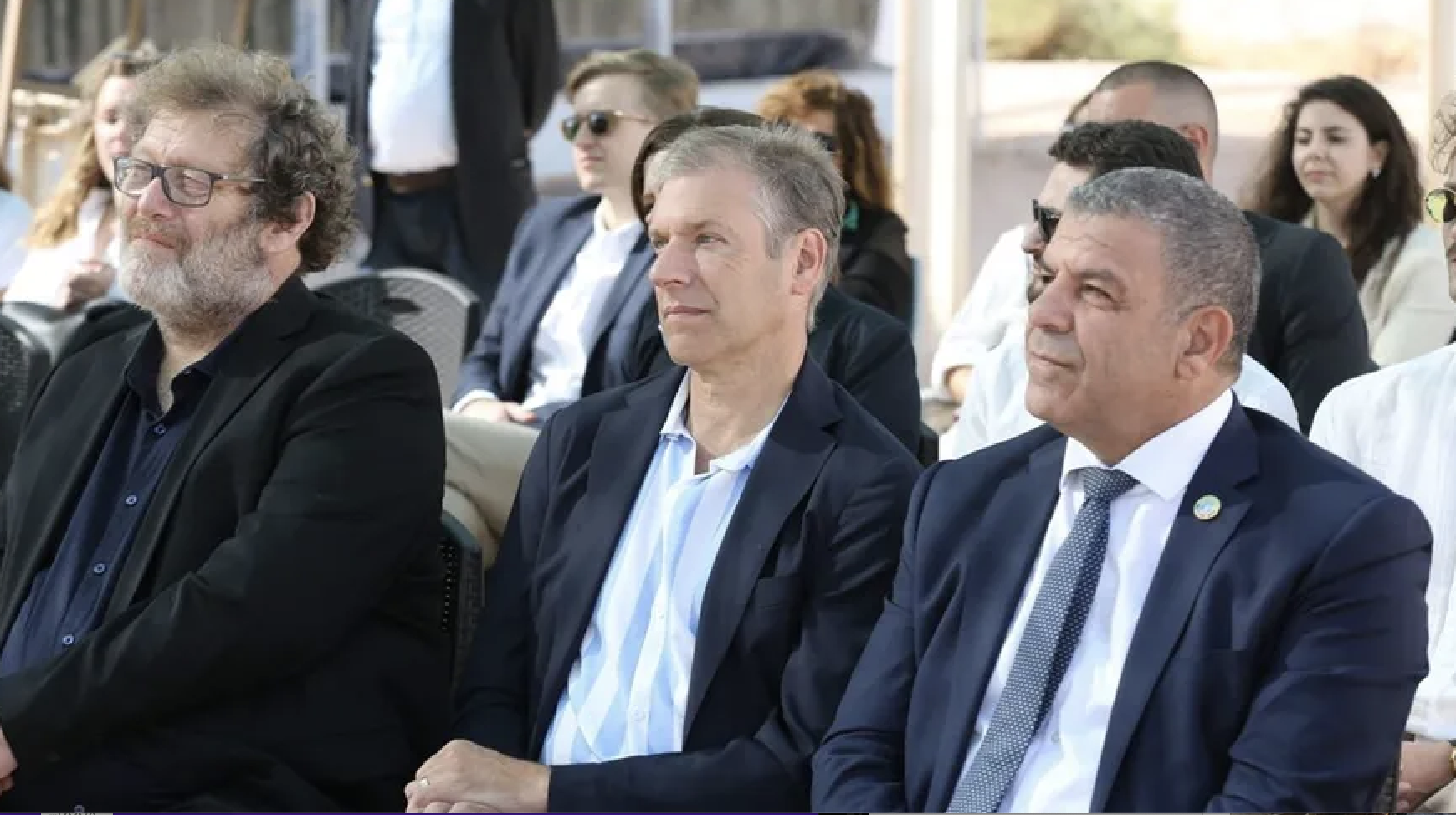NEWS COP27: Green hope growing in the desert
To read the original in the November 5, 2022 Jordan Times, click here.
COP27: Green hope growing in the desert
by
Frederic Hauge and Dan Kammen
World leaders gather anew in Egypt for COP27 to address the existential threat of the climate crisis; while solutions exist, the world needs to see action and implementation. To achieve this, the global community needs both grit and optimism.
![]()

COP27 should be about collaboration, green acceleration, and, most importantly, bringing to life existing concepts and solutions to scale and create much-needed green jobs. A metaphorical crossing of the Red Sea is needed to halt the current trajectory to 2.8°C or more of global warming. It is time for finance to step up.
In 2012, at COP18 in Doha, a pilot facility for production of food, energy, water, and revegetation of desert areas was launched. Today, a few kilometers from where COP is taking place, the Sahara Forest Project produces tons of vegetables far into the Jordanian desert, in saltwater-cooled greenhouses, with their own renewable energy, planting trees in the desert.
Not everyone believed, back in 2012. But seeing was believing, and it still is.
At the dawn of the 2000s the electrification of transport seemed a vision more than a possible reality. In 2009, when Bellona brought the first four Tesla Roadsters in Europe to COP15 in Copenhagen, it all became a bit more real. Today, we can acknowledge massive strides taken over the last 13 years.
Not everyone believed, even in 2009. But the needle was moved. Seeing is believing.
The adage may be old and slightly worn out but has never been truer. Can a few electric cars solve the problem? No. But can it click the right gears into place? Absolutely.
Renewable energy has been doing this for years, with rapidly declining costs for solar, wind, and storage technologies all transforming the energy sector. Replacing fossil fuels in use has also become a no-brainer in many more applications, with heavy construction machinery the latest addition. Manufacturers are increasingly becoming aware of the fact that not only is electrification good for the environment, it is also good for worker health, noise levels, and the pocketbook. In industry, carbon capture and storage is becoming viable as a large-scale solution for process emissions that are difficult to get rid of.
“And while damages and losses of climate change continue to increase with each passing year of inaction, the global community is still stuck trying to deliver on the 2009 pledge to mobilize the mere $100 billion annually from developed to developing countries.”
But tempo is lacking. Implementation is lacking. Scale is lacking. And not least, finance is lacking.
Getting money to the right projects is without doubt one of the greatest challenges in the fight against climate change. Our current measures for accelerating funding, both for adaptation and mitigation, are failing. And while damages and losses of climate change continue to increase with each passing year of inaction, the global community is still stuck trying to deliver on the 2009 pledge to mobilize the mere $100 billion annually from developed to developing countries.
We need to have a hard look at challenges facing the current climate financing. At the same time, we need to take a view beyond this one pledge, toward new mechanisms for financing a just and green transition.
A paradigm shift is needed in climate finance, a Climate Finance 2.0. This new paradigm can focus on certain key issues.
One such issue is infrastructure. Large-scale infrastructure projects are hugely important to roll out much-needed renewables, as well as decarbonizing harder-to-electrify industrial processes across the world. But project deployment is slow, and projects suffer from lack of public funding, long lead times, challenges facing permitting processes, administrative hurdles, and issues related to public acceptance.
Another issue is defining projects “of common interest” eligible for climate financing. An international mechanism channelling capital to projects of common interest could create a global stamp of approval, sending positive market signals and mobilizing additional private capital either into projects directly or to associated projects relying on shared infrastructure.
These are not just examples, but a vision, and a possible reality. Now more than ever we need action and leadership. This is why it is so important to showcase all the solutions that actually exist today, highlighting their many benefits, and building better stories for climate action as a positive for the climate but also for countries, cities, communities. This is also why we are at COP27.
We are on a trajectory for 2.8 degrees instead of 1.5. The slogan for COP26 in Glasgow was “keeping 1.5 alive” — it is currently on life support. Still, every day we see new and innovative solutions to the climate and environmental crises that the global community is trying to solve.
Seeing is believing. Now let us get them some funding.
Dan Kammen is a professor of sustainability at the University of California, Berkeley. He has served at the World Bank as chief technical specialist for renewable energy, and as science envoy in the Obama administration. He has been a coordinating lead author of the Intergovernmental Panel on Climate Change since 1999.
Twitter: @dan_kammen.
Frederic Hauge founded Bellona in 1986, at the age of 20. Through academic work, legal action, and non-violent activism, Bellona has changed the opinion and set the agenda on environmental issues in Norway for almost three decades. Hauge was elected in 2007 as vice chairman of the European Commission’s Technology Platform for CO2 sequestration (ZEP). The same year TIME Magazine named him “Hero of The Environment”. In 2009 he became a board member of the EU Biofuel Platform (EBTP), and one of the founding partners of the Sahara Forest Project.
You must be logged in to post a comment.